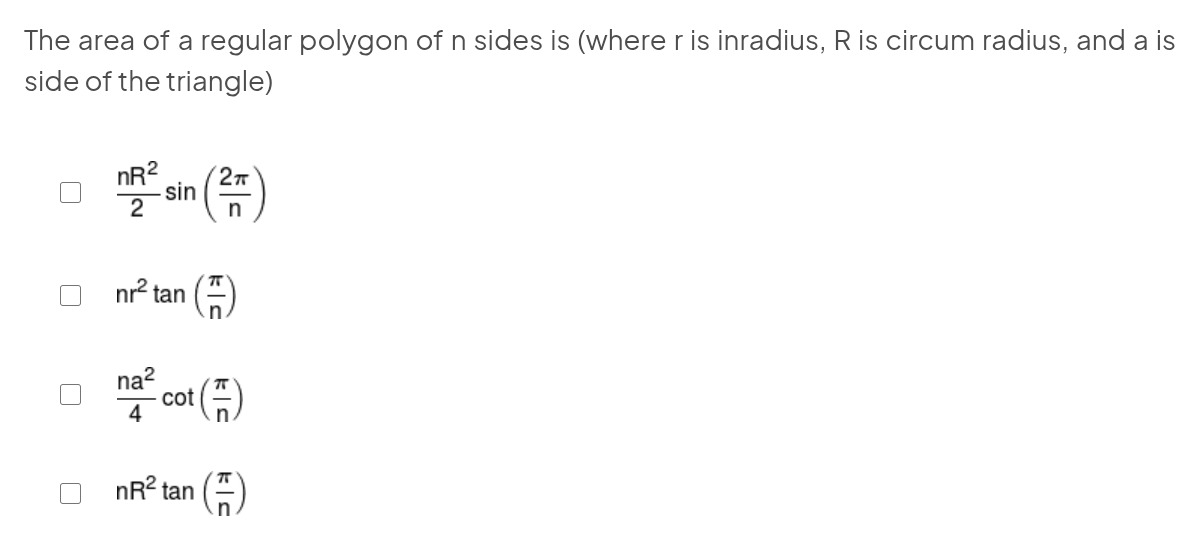Question
Question: The area of a regular polygon of n sides is (where r is inradius, R is circum radius, and a is side ...
The area of a regular polygon of n sides is (where r is inradius, R is circum radius, and a is side of the triangle)

2nR2sin(n2π)
nr2tan(nπ)
4na2cot(nπ)
nR2tan(nπ)
The area of a regular polygon of n sides can be expressed as 2nR2sin(n2π), nr2tan(nπ), or 4na2cot(nπ).
Solution
The area of a regular polygon can be derived by dividing it into n congruent isosceles triangles. The area of each triangle, and consequently the polygon, can be expressed in terms of the circumradius (R), inradius (r), or side length (a).
-
Using Circumradius (R): The area of one isosceles triangle with two sides R and the included angle n2π is 21R2sin(n2π). The total area of the polygon is n times this value: Area =2nR2sin(n2π).
-
Using Inradius (r): In a right-angled triangle formed by the inradius, half the side length (a/2), and the circumradius, we have tan(nπ)=ra/2, which gives a=2rtan(nπ). The area of one triangle is 21×base×height=21ar. Substituting a, the area of one triangle is 21(2rtan(nπ))r=r2tan(nπ). The total area of the polygon is n times this value: Area =nr2tan(nπ).
-
Using Side Length (a): From the relation tan(nπ)=ra/2, we get r=2acot(nπ). The area of one triangle is 21ar. Substituting r, the area of one triangle is 21a(2acot(nπ))=4a2cot(nπ). The total area of the polygon is n times this value: Area =4na2cot(nπ).
The fourth option, nR2tan(nπ), is not a correct formula for the area of a regular polygon. This can be shown by comparing it to the known formula in terms of R and using trigonometric identities.
